Strange Beauty Products: Unbelievable Ingredients Unveiled
Beauty has always been a pursuit of the extraordinary. From ancient rituals to modern innovations, the quest for flawless skin and luscious locks has led to the inclusion of some truly bizarre ingredients in beauty products. While some of these ingredients deliver remarkable results, others might leave you questioning the limits of human creativity. Let’s dive into the world of strange beauty products and uncover the weird beauty ingredients that have been turning heads for centuries.
1. Snail Mucin: The Slime That Heals
One of the most popular trends in the beauty industry today is the use of snail mucin. Extracted from snail slime, this ingredient is celebrated for its hydrating and anti-aging properties. While it might sound odd, snail mucin is packed with hyaluronic acid, glycolic acid, and proteins that boost collagen production. Originating from Korean skincare, it has become a global sensation. Yet, for those new to the idea, the thought of smearing snail slime on your face might still feel a bit… slimy.
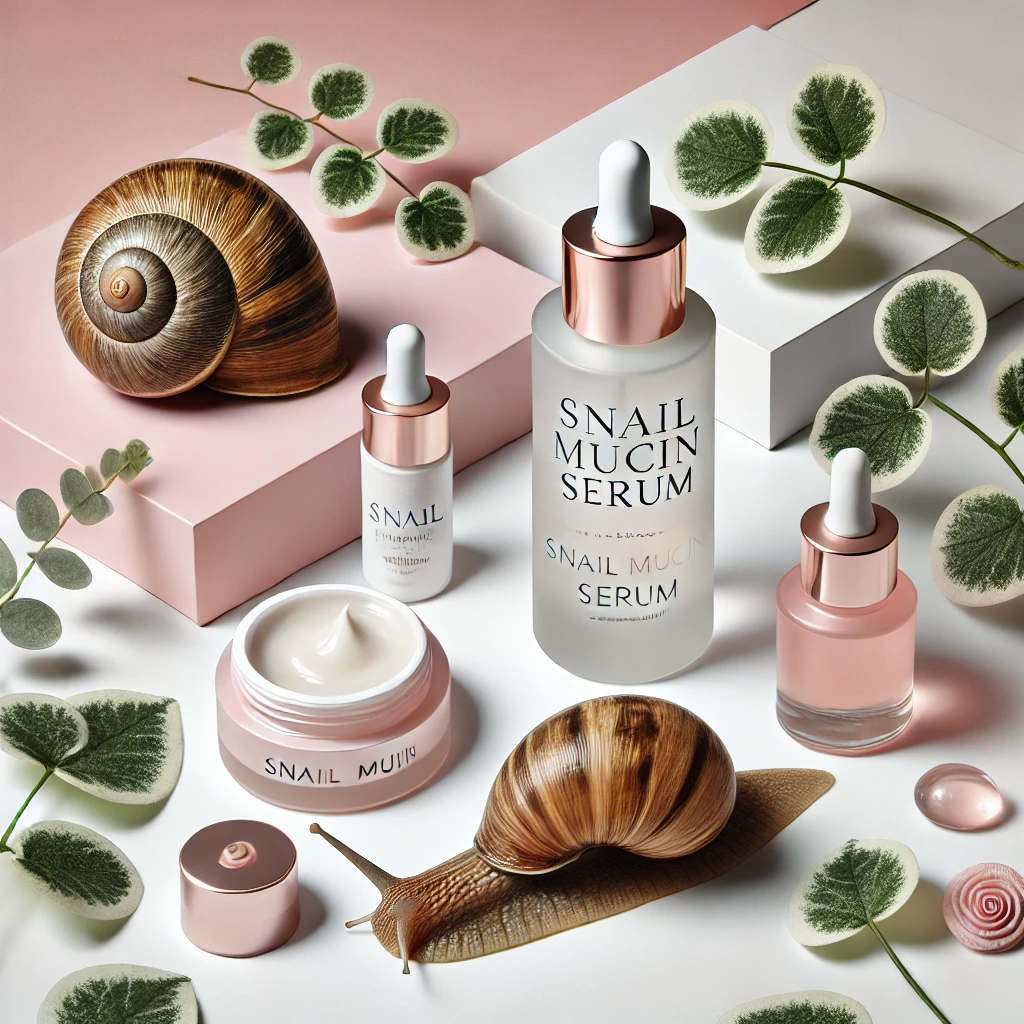
Historical Origins:
Snail mucin has been used for centuries, particularly by ancient Greeks who applied crushed snails to wounds to promote healing. Later, Chilean farmers in the 1980s discovered that working with snails left their hands unusually smooth and blemish-free, sparking its modern usage.
Present-Day Use:
Now a staple in Korean skincare, snail mucin is found in products like serums, creams, and sheet masks. It hydrates, heals, and brightens the skin thanks to its glycolic acid and hyaluronic acid content.
Sources:
- “Snail Slime’s Role in Skincare” – Journal of Dermatological Science.
- Modern product lines like COSRX Snail 96 Mucin Power Essence.
2. Bird Droppings: Geisha Beauty Secrets
Known as “uguisu no fun” in Japan, powdered bird droppings were once a coveted beauty secret among geishas. Derived from nightingale excrement, this ingredient contains enzymes that gently exfoliate the skin and brighten its tone. Modern formulations sterilize and process the droppings, but the idea of using such an odd beauty product is certainly not for the faint-hearted.
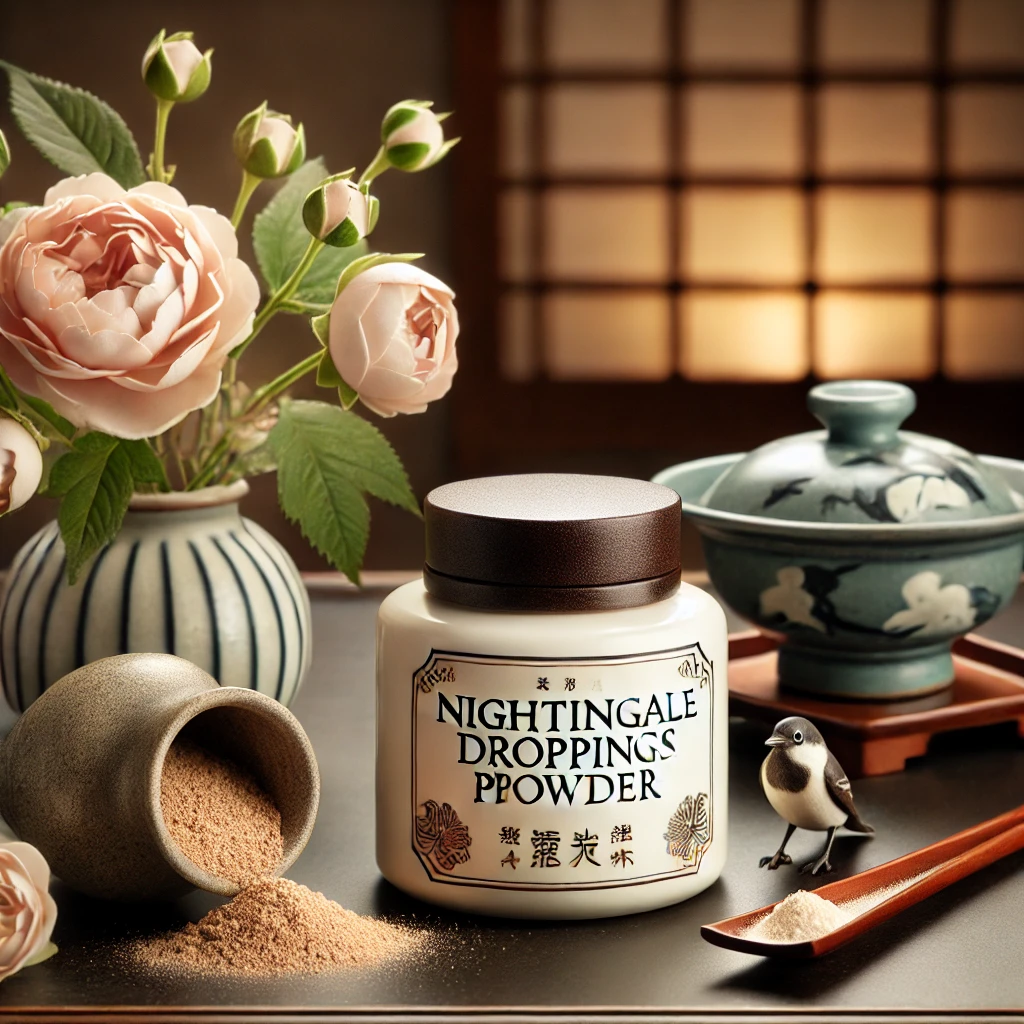
Historical Origins:
The use of nightingale droppings, or “uguisu no fun,” traces back to the Edo period in Japan (17th century). Geishas and kabuki actors used it to remove heavy makeup and brighten their skin.
Present-Day Use:
Processed bird droppings are sterilized and made into fine powders for facials, available in select high-end spas. It’s still hailed for its natural exfoliating enzymes and skin-lightening effects.
Sources:
- “Traditional Japanese Beauty Rituals” – Asian Beauty Secrets by Victoria Tsai.
- Modern brands offering products like Shizuka New York’s Geisha Facial.
3. Bee Venom: Nature’s Botox
Dubbed as “nature’s Botox,” bee venom has gained popularity for its anti-aging effects. By stimulating the skin’s production of collagen and elastin, it helps reduce the appearance of fine lines and wrinkles. Some of the world’s most luxurious beauty brands now include this strange beauty product in their collections, but the thought of intentionally applying venom to your skin might not appeal to everyone.
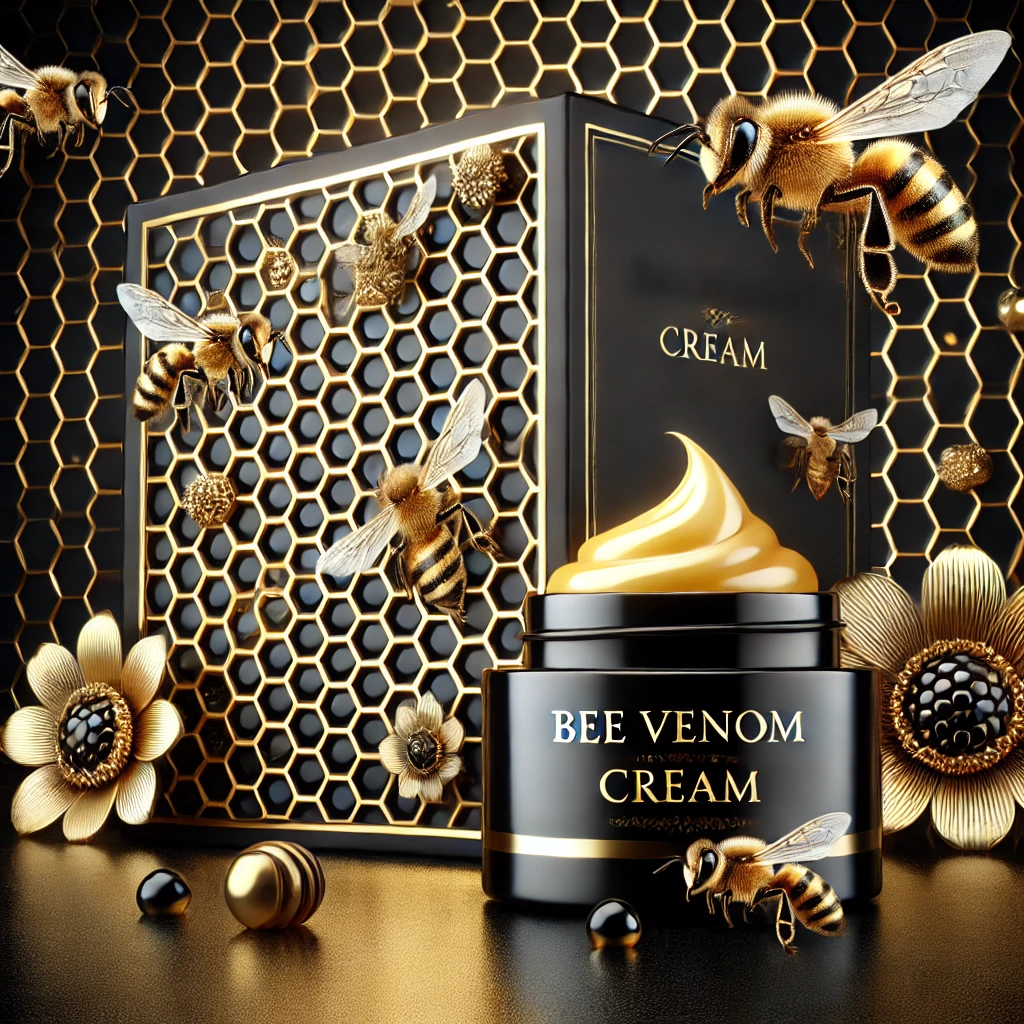
Historical Origins:
Bee venom therapy has been used for thousands of years in apitherapy, an alternative medicine practice to treat ailments such as arthritis. The beauty application gained prominence more recently, especially in New Zealand, where bee venom skincare was pioneered.
Present-Day Use:
This ingredient is now a key feature in anti-aging creams and masks. Its ability to stimulate collagen and elastin production makes it a favorite among luxury skincare brands.
Sources:
- British Bee Keepers Association on bee venom’s cosmetic benefits.
- “Bee Venom in Modern Dermatology” – Dermatology Research and Practice.
4. Bull Semen: Hair’s Secret Weapon
Haircare enthusiasts may have heard of this shocking ingredient. Used in some high-end conditioners, bull semen is touted for its protein-rich composition that strengthens and repairs damaged hair. While it delivers visible results, many people find the idea of this treatment unpalatable, earning it a spot among the weirdest beauty ingredients.
Historical Origins:
This ingredient gained attention in the early 2000s when salons in the UK started offering treatments featuring bull semen as a protein-rich hair mask.
Present-Day Use:
Although not mainstream, bull semen is still used in select hair salons worldwide, claiming to repair and fortify damaged hair.
Sources:
- Article: “The Craziest Haircare Treatments Ever” – Allure Magazine.
- Brands like Hari’s Salon in London popularized this treatment.
5. Gold and Platinum Dust: Luxury at a Price
Luxury knows no bounds, and precious metals like gold and platinum have made their way into the beauty world. Found in face masks, serums, and creams, these ingredients claim to rejuvenate the skin and add a touch of radiance. Though undeniably extravagant, the use of metals in beauty products might strike some as the ultimate in odd beauty products.
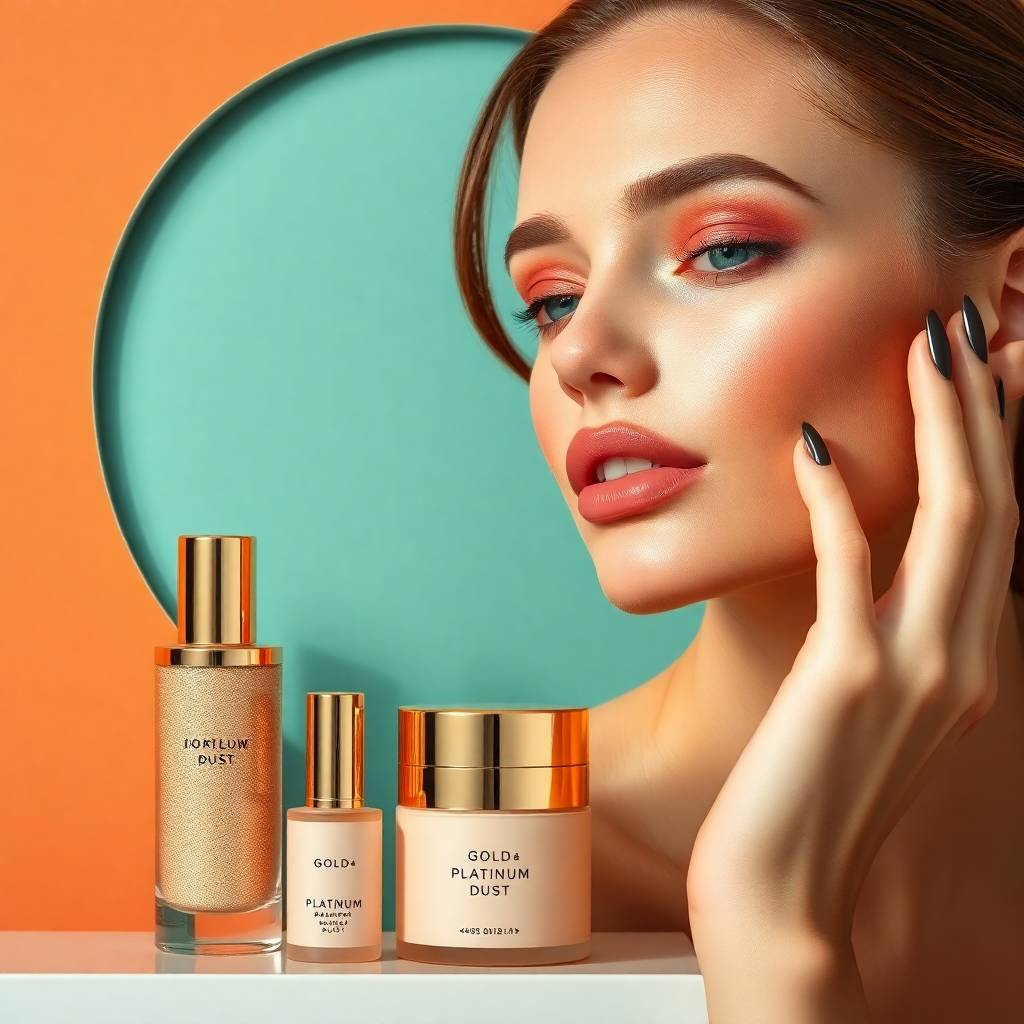

Historical Origins:
Gold has been used in beauty since ancient Egypt, where Cleopatra was said to sleep with a gold mask to enhance her complexion. The Chinese Ming Dynasty also incorporated gold into their beauty regimens.
Present-Day Use:
Gold and platinum are found in luxury skincare products, often marketed as anti-aging solutions. They claim to improve skin elasticity and combat environmental damage.
Sources:
- “Gold in Skincare: Ancient to Modern Uses” – Cosmetic Chemistry Insights.
- Products like Chantecaille Nano Gold Energizing Cream.
6. Human Placenta: A Celebrity Favorite
Hollywood celebrities have been known to rave about skincare products containing human placenta. Rich in nutrients and growth factors, this ingredient is believed to promote skin regeneration and elasticity. Despite its effectiveness, the idea of using placenta-based products often sparks debates about ethics and hygiene, making it one of the worst beauty products for the squeamish.
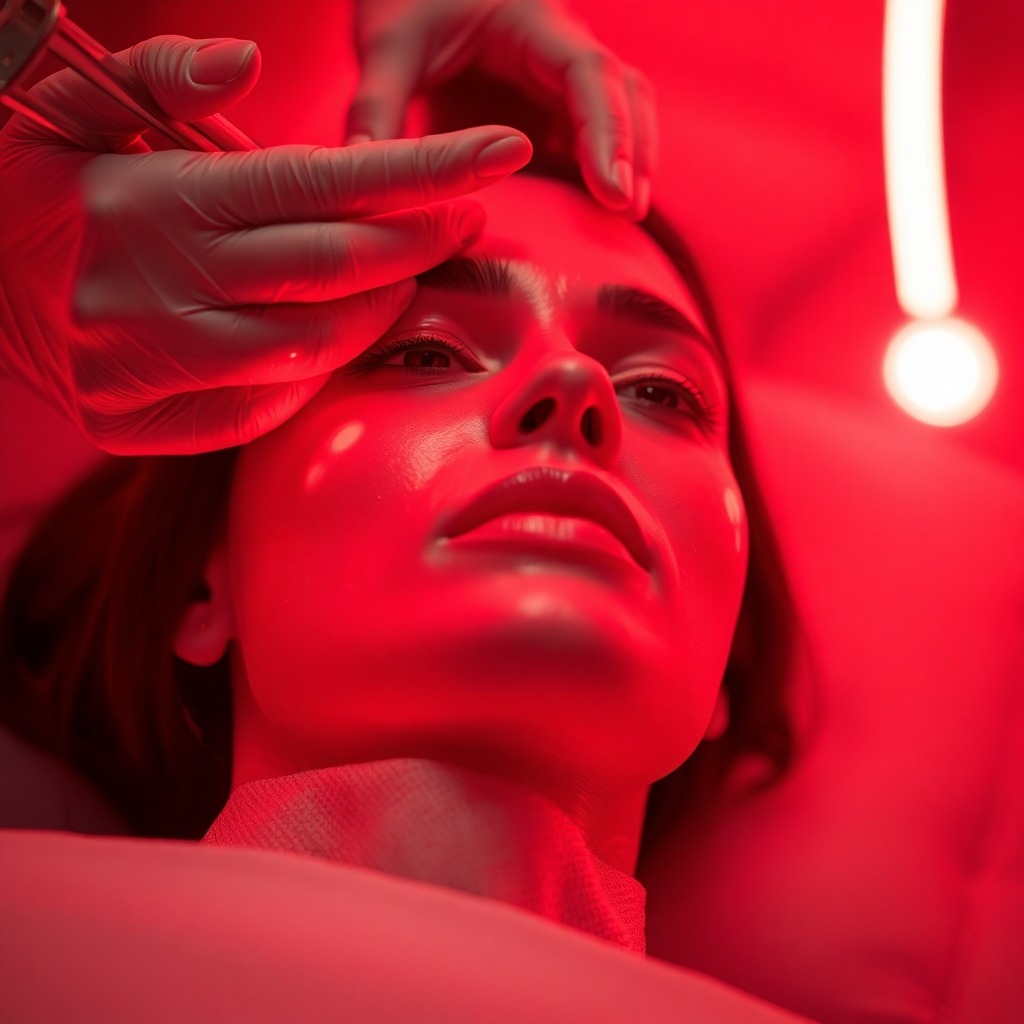

Historical Origins:
Placenta use in beauty originated in Russia and Japan in the mid-20th century, where it was touted for its regenerative properties.
Present-Day Use:
Celebrity-endorsed placenta facials have gained popularity, especially in Hollywood. Products range from creams to serums enriched with animal or human placenta extracts.
Sources:
- Research paper: “Placenta Extracts in Dermatology” – Clinical, Cosmetic and Investigational Dermatology.
- Celebrity-endorsed treatments like Eva Longoria’s placenta facials.
7. Fish Scales: Shimmering Elegance
If you’ve ever wondered how some cosmetics achieve their pearlescent glow, you might be surprised to learn that fish scales are the secret. Known as guanine, this ingredient is extracted from fish to create the shimmering effect in nail polishes, lipsticks, and eyeshadows. While harmless, the association with seafood can be unsettling for some.
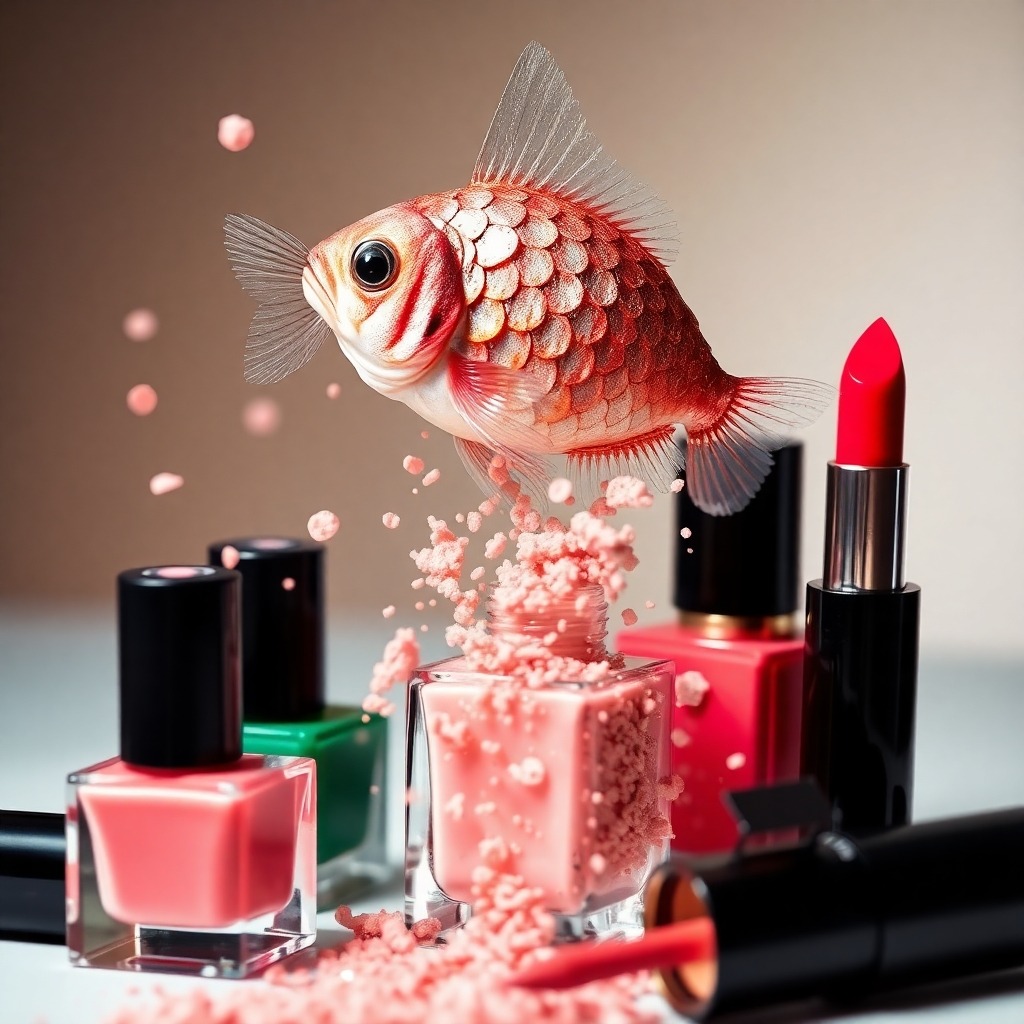
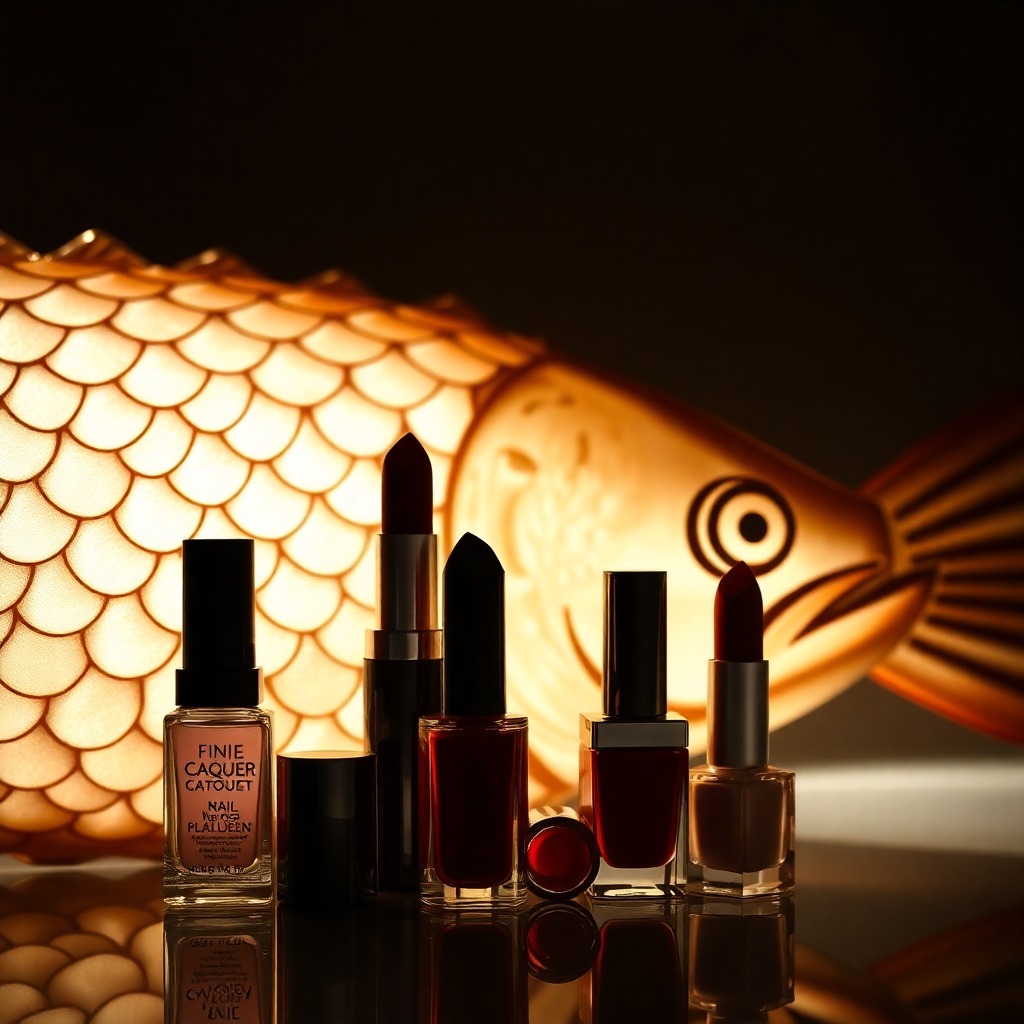
Historical Origins:
The use of guanine, a crystalline substance extracted from fish scales, dates back to early 19th-century cosmetics.
Present-Day Use:
Fish scales are widely used in shimmering beauty products like nail polishes, lipsticks, and eyeshadows. The extraction process has been refined to ensure eco-friendly practices.
Sources:
- “How Fish Scales Create Cosmetic Shimmer” – Cosmetic Science Journal.
- Common in brands like Maybelline and Revlon.
8. Pig Collagen: A Natural Skin Restorer
Collagen is a key protein that gives skin its youthful elasticity and structure, and pig collagen has emerged as one of the most effective sources for replenishing it. Derived from pig skin and connective tissues, this ingredient is praised for its compatibility with human skin due to its similar molecular structure. While it may sound unusual, pig collagen has a long history of use in beauty and wellness routines, proving its efficacy in improving skin hydration, firmness, and texture.
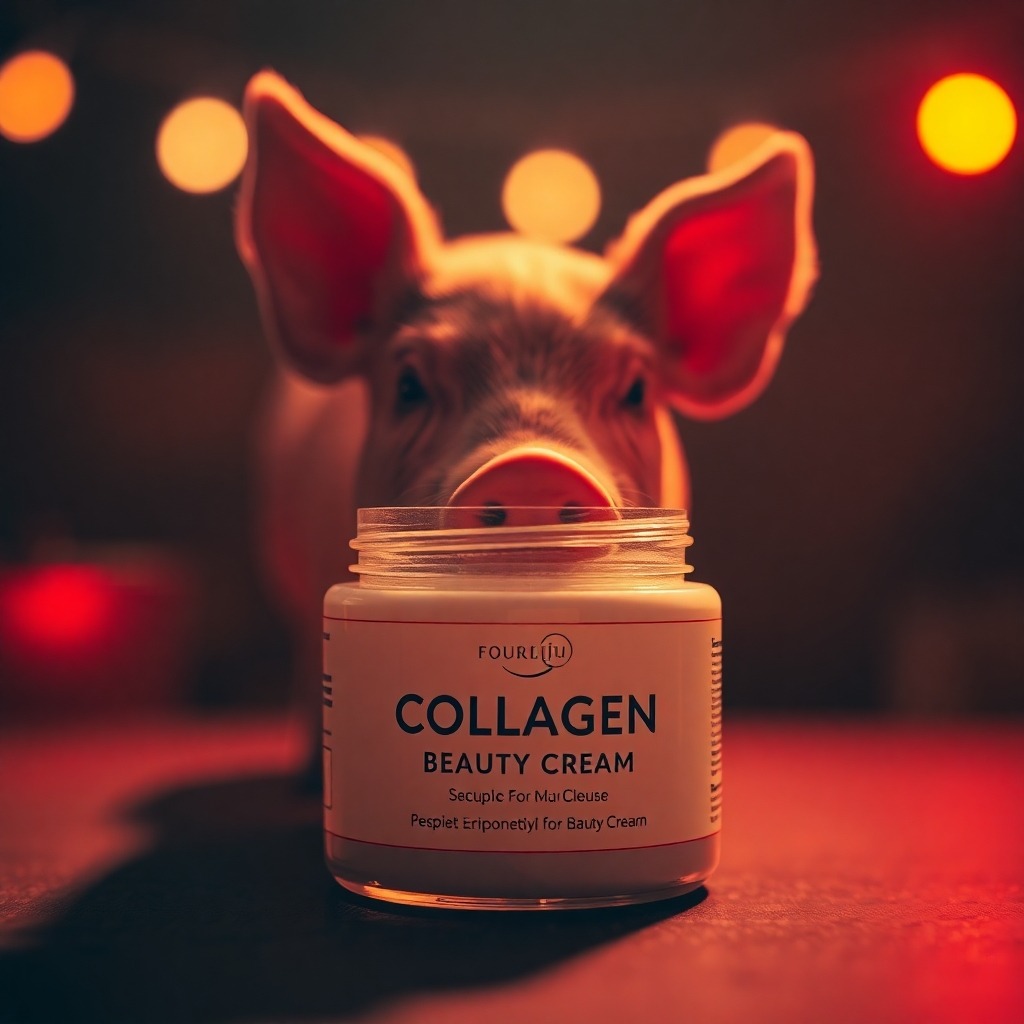
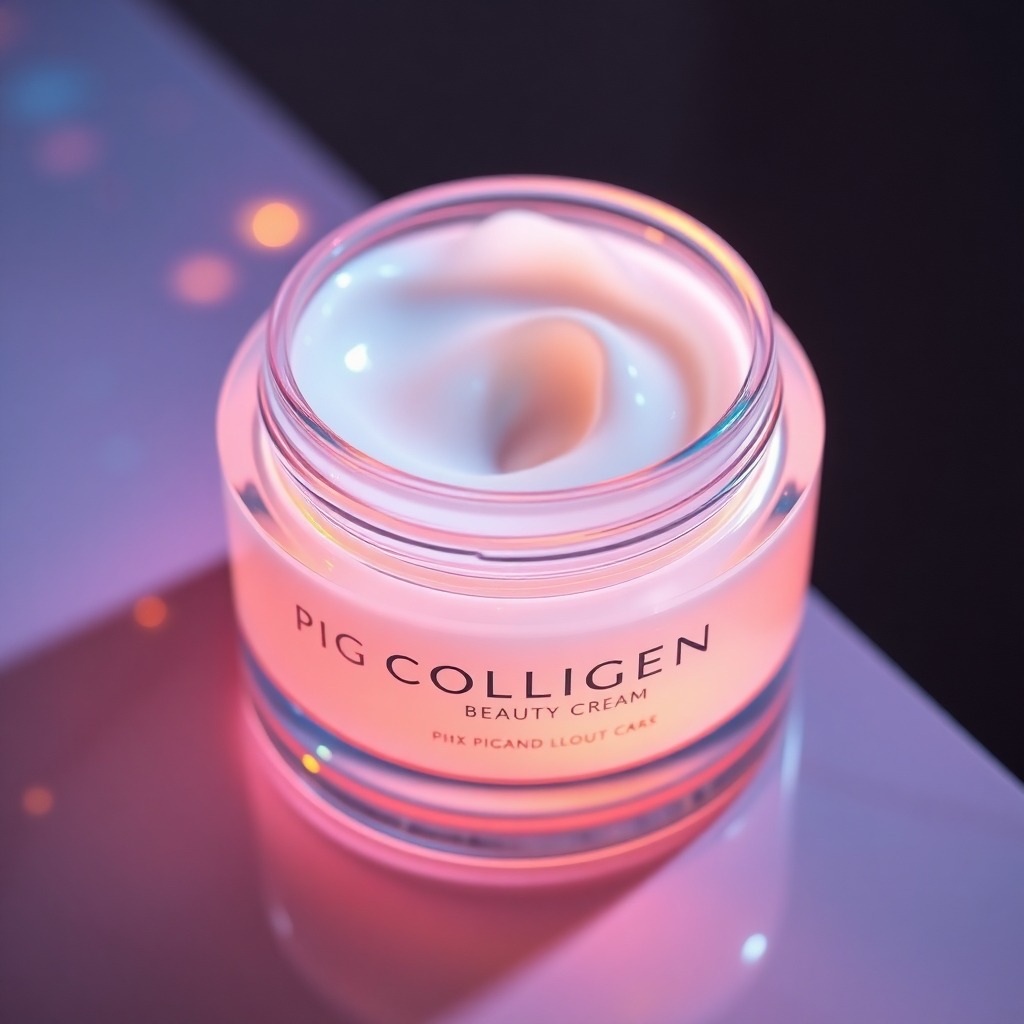
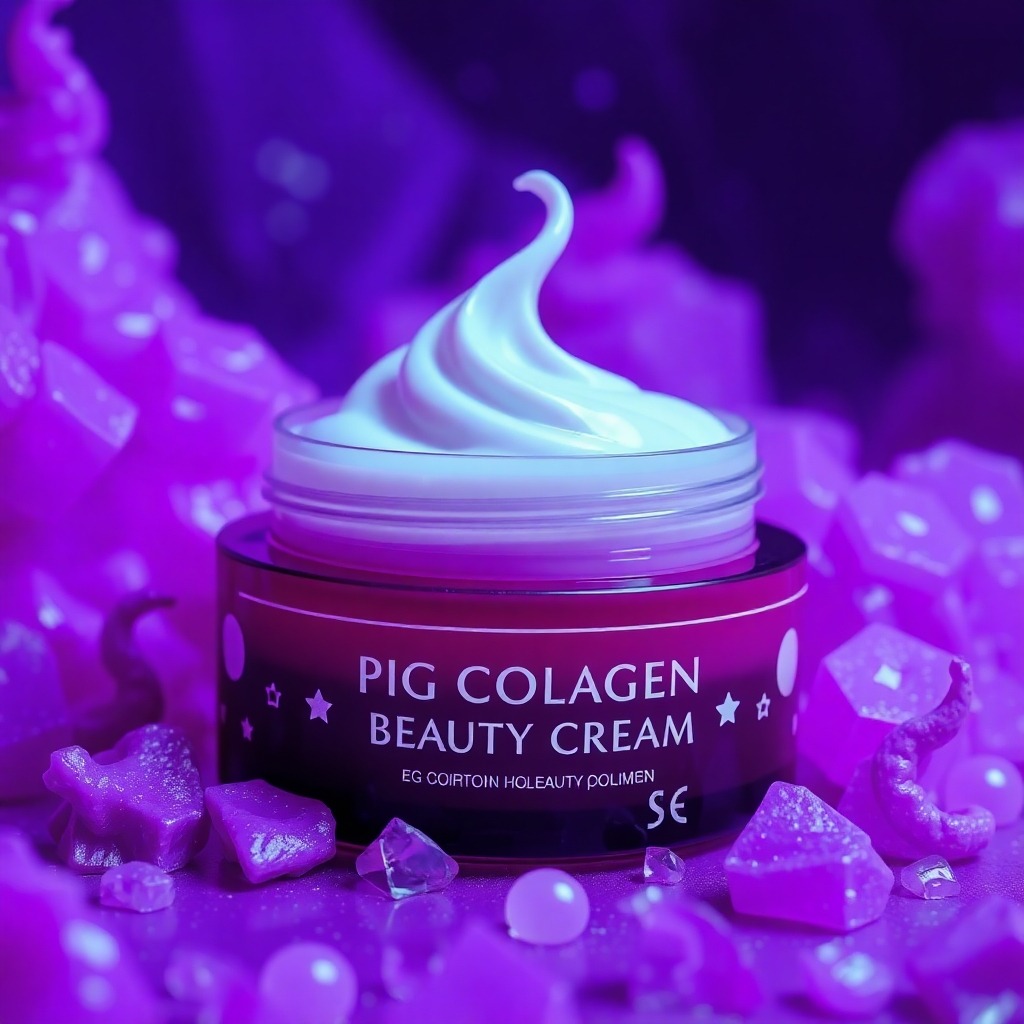
Historical Origins:
Pig collagen has been used in various forms for centuries, particularly in East Asian cultures, where pig skin and bones were boiled to create broths believed to enhance skin elasticity and hydration. Collagen-rich recipes were part of traditional beauty rituals in China and Korea.
Present-Day Use:
Pig collagen is now a prominent ingredient in anti-aging skincare products, particularly in Asia. It’s used in creams, sheet masks, and serums for its ability to hydrate, plump, and firm the skin. The collagen molecules help improve skin texture and elasticity, making it a sought-after ingredient in modern formulations.
Sources:
- “Collagen in Skincare: Benefits and Sources” – Journal of Cosmetic Science.
- Products like Etude House Moistfull Collagen Cream and Mizon Collagen 100.
9. 70s Beauty Products: A Nostalgic Look
The 1970s brought its own share of unusual beauty trends. One standout example is the use of baby oil for tanning. While it gave skin a radiant glow, it offered no UV protection, making it one of the worst beauty products in hindsight. Another odd trend was the use of Vaseline as a highlighter for the face and lips—a testament to the era’s experimental approach to beauty.
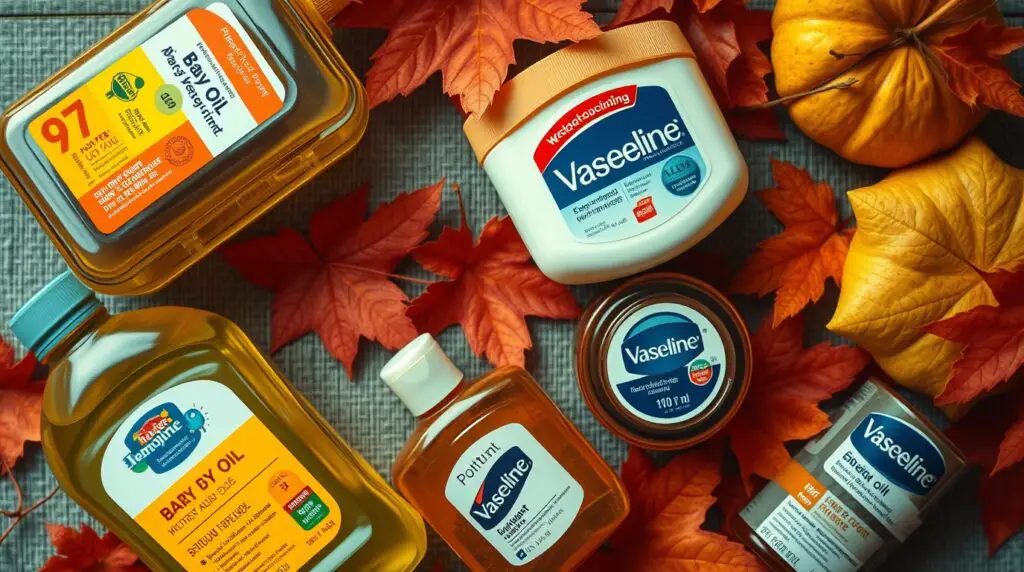
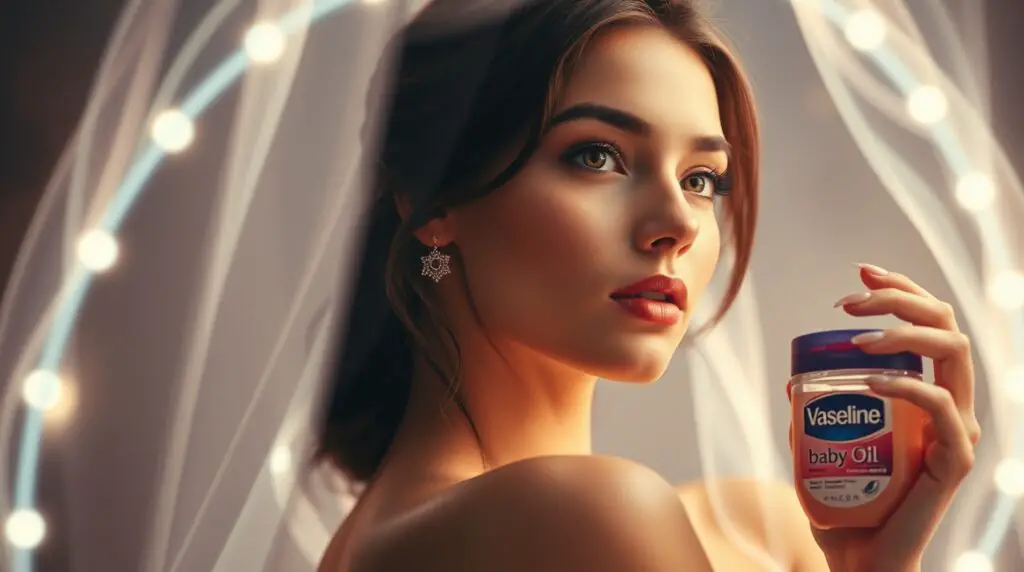
Historical Origins:
The 1970s were marked by experimental beauty trends. One infamous trend was tanning with baby oil, which became popular despite its lack of UV protection.
Present-Day Use:
While baby oil tanning has been replaced by safer alternatives, the 70s inspired the use of multitasking products like Vaseline as a highlighter, which still has a cult following today.
Sources:
- “The History of Tanning” – American Academy of Dermatology.
- “Retro Beauty Trends Making a Comeback” – Harper’s Bazaar.
10. Whale Vomit: A Fragrance Fixative
Ambergris, a waxy substance found in the digestive systems of sperm whales, is prized in the perfume industry for its ability to enhance and stabilize scents. While highly valued, the idea of using whale vomit in fragrances might make some think twice before spritzing their favorite perfume.
Historical Origins:
Ambergris, often referred to as whale vomit, has been used in perfumery since the Middle Ages. It was prized for its ability to stabilize scents and add a musky undertone.
Present-Day Use:
Ambergris is still used in high-end perfumes, though synthetic alternatives are now more common due to ethical and legal concerns.
Sources:
- “Ambergris in Perfume: The Science Behind It” – Perfumer & Flavorist Magazine.
- Classic fragrances like Chanel No. 5 historically used ambergris.
Why Do We Use Such Strange Ingredients?
The inclusion of these weird beauty ingredients often stems from cultural practices, scientific discoveries, or a willingness to explore the unconventional in the pursuit of beauty. Many of these odd beauty products are backed by science, while others rely on historical anecdotes or luxury branding to justify their appeal.
Conclusion: Beauty Beyond Boundaries
The world of beauty products is as diverse as it is peculiar. While some of these strange beauty products have stood the test of time, others have faded into obscurity. Whether you’re curious enough to try them or prefer to stick to more conventional options, they serve as a reminder of the lengths humanity will go to achieve beauty.
Would you dare to try any of these? Or do you have a personal favorite among the weird beauty ingredients? Share your thoughts!